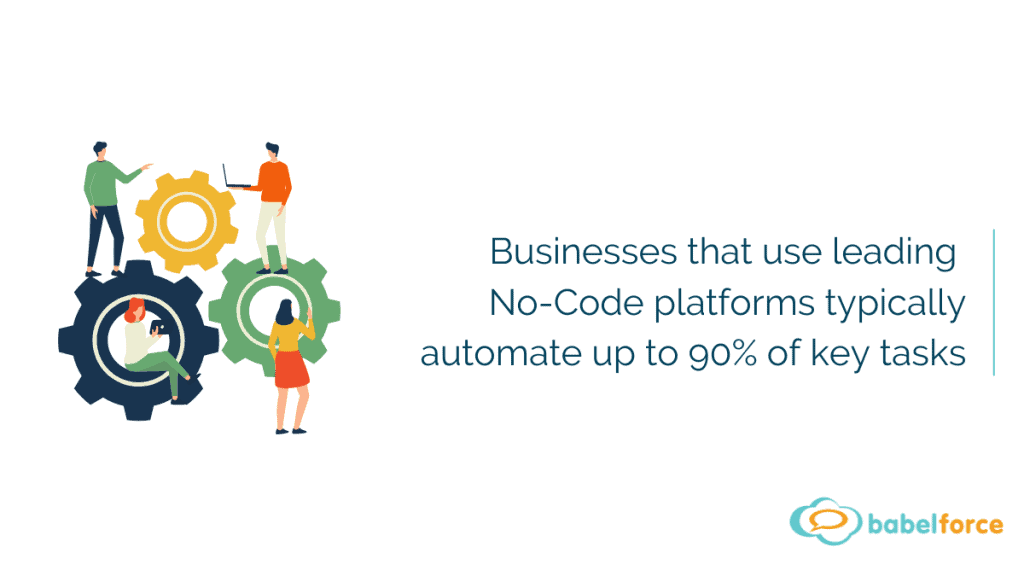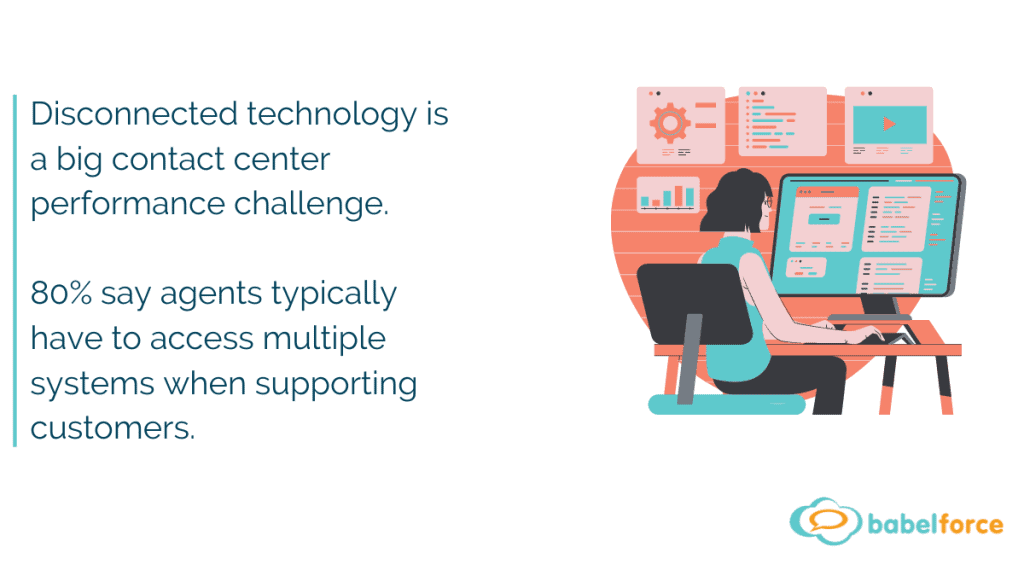A Computer Telephony Integration (CTI) system may be ideal for businesses that need to simplify their processes, but it can also have drawbacks. Security, interoperability, high maintenance and operation costs, limited scalability, and system downtime are some of the common issues you need to deal with.
Many companies are looking for an answer to their telephony needs, and that’s where Computer Telephony Integration comes in. It seems like a perfect solution because it can be used as a voice mailbox and an automated attendant.
Computer Telephony Integration technology is commonly used in contact centers to enable computers to perform telephone functions.
With a CTI, the user can click on a screen to call, record calls, monitor calls, and get real-time reports without using a telephone. The CTI will also show a customer’s information before answering a call and provide other functions like automated dialing and call-routing.
However, this technology doesn’t always solve your problem.
Let me tell you why you may have some trouble with your CTI system.
1. Security
Security is probably the most crucial reason CTI doesn’t always solve your problem. If you can access voicemail from an outside phone, so can someone else. Even if you password-protect the mailbox, the system still needs to fetch messages, or it won’t work correctly.
The real security concern comes when multiple employees need access to the system. It only takes a single person with malicious intent to give other people access to confidential data.
It is crucial to use software that features some kind of Data Leak Protection (DLP). DLP technology allows the administrator to configure who can access sensitive information like voice messages. It also simplifies keeping track of and managing access.
2. Cost
Computer Telephony Integration can be expensive, especially if you need to purchase new hardware or software. The cost of licenses and support can also add up over time. If your business is small, the cost of Computer Telephony Integration may not be worth it.
However, if your business is large, you may find that increased productivity offsets the costs.
Your contact center will no longer need to purchase and maintain physical phones, and it also allows your agents to handle more calls without compromising customer satisfaction. Finally, since the CTI improves the call center workflow, it ultimately reduces employee turnover, reducing the associated hiring and training costs.
For FCR Media, a digital media agency with over 40,000 clients, the right CTI solution paid back £271,000 within a year from sales efficiency, customer service efficiency, IT efficiency, and improved customer satisfaction.
3. Complexity
Computer Telephony Integration can be very complex, especially if you need to configure it to work with your current systems. The process of setting up the system and troubleshooting any problems can be time-consuming and frustrating.
If your company is not technically capable, you may need to hire a consultant to set up and maintain your system.
Alternatively, you can use our No-Code automation platform to configure your call center tools. Systems like babelforce allow you to embed your telephony tools into your core business platforms without coding skills.
4. Lack of adequate features
Computer Telephony Integration may not have all the features that you need. For example, if you need to send faxes or make outbound calls, you may have to use a separate system. Using separate systems can lead to duplication of effort and increased costs.
Some businesses implementing CTI have to hire additional staff or purchase more hardware to handle the calls.
But with an adaptable CTI, it’s easy to add or remove features without having to change the system.
5. Lack of interoperability with other systems
CTI systems can be challenging to implement if your private branch exchange has poorly designed software. In the same way, Computer Telephony Integration may not always be compatible with other systems such as your web server. It can make it hard to perform tasks such as delivering messages to web pages.
The system might also not work effectively with voice mailboxes located at different sites. You will have to invest in new software or hardware to solve this problem.
However, you can also opt for a CTI system that features advanced integration. These systems are designed to work seamlessly with other software and hardware. They are also more likely to provide regular updates that allow them to be compatible with future versions of other software.
6. Limited scalability
Computer Telephony Integration may not handle a large number of users. The system could slow down or even crash if too many people use it simultaneously, which can be a problem for businesses growing rapidly.
You may need to purchase additional hardware or software to scale the system up and meet the demand.
For example, a scalable CTI may combine call agents’ login information from different departments into one centralized login database. So, the system administrator can easily add or remove data like an agent’s login details through the centralized database instead of accessing several databases in independent systems.
Ultimately, it is always crucial to consult a professional to ensure that the system you settle for allows room for expansion.
7. Inability to perform complex tasks
Computer Telephony Integration is designed for basic functionality only. It requires a lot of programming and configuration to handle more advanced features such as outbound calling. In some cases, you may have to hire additional staff or purchase new hardware to handle the increased workload.
Working with an ideal system provider like babelforce can help you add services to your CTI without increasing complexity.
8. Training required
You will need to train employees on how to use the system appropriately to achieve maximum productivity. Training can be time-consuming and expensive, especially if you need to hire someone for training services.
However, some systems are designed with easy-to-use interfaces that make it easy for employees to learn how to use them.
Training employees on using the new system may be cheaper than hiring new staff. It also ensures that your employees are familiar with the system and can use it efficiently for their work tasks.
9. System downtime
Computer Telephony Integration can sometimes cause problems with your private branch exchange. They are often incompatible, especially if the PBX is old or poorly designed. Such problems can lead to system downtime.
If you rely on your telephone system for essential calls, this may affect how well your business runs. Your business may end up losing customers due to an ineffective call management system.
Choosing a good-quality CTI system can help reduce the chances of this happening. Ensure that the system is compatible with your PBX and that you regularly install the available updates.
10. Limited Support
Computer Telephony Integration is not necessarily easy to use. This is especially true if you need specific features and functions to make the most of it. If you encounter problems, you’ll most likely be required to pay for support (or purchase an expensive system with unlimited support).
This means that the support cost may negate any savings you make by implementing CTI. Finding a system that offers good support is essential to avoid and resolve any urgent problems. Ensure that the system you choose has a good reputation for customer service and technical support.
Executing a Computer Telephony Integration (CTI) system can be tricky, especially without deep integration and an internal IT team. That is why we created a No-Code automation platform to help you configure deep integrations without any coding knowledge.







